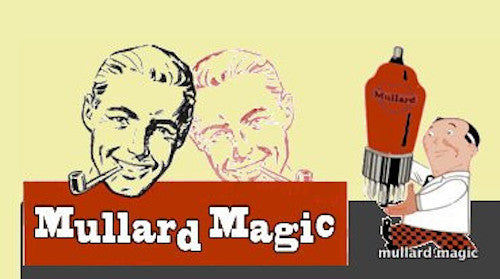
THE MAGICAL MULLARD OCTODE VALVE!
Share
With the birth of the Superheterodyne radio and the means to keep valve count and commensurate valve cost low, it turned to the valve manufacturers – particularly Mullard to come up with advanced valve designs to accommodate this requirement.
In early Superhets, the heterodyning frequency was generated by a local oscillator valve and was then super-imposed on the signal by a 'mixer' valve. A handy dodge was to incorporate both of these functions in a single envelope and developments saw successively the double-grid valve, the screened tetrode and the HF pentode being used where injection of the heterodyning frequency was achieved by the use of a coupling coil in the screen or auxiliary grid circuit. Cue the introduction of the Octode where the coupling of the emissive stream occurred completely within a single envelope.
The Octode, is an 8-electrode valve, having six grids and an anode concentrically arranged about a single cathode which with Grids 1 and 2, can be considered as a triode, and may be employed for the generation of the heterodyning frequency. The positive potential on the screen (Grid 3) causes the emissive stream to be hyper- accelerated and electrons will pass into the space between Grids 3 and 4, but by application of a negative potential grid bias applied to Grid 4, these electrons will be repulsed, resulting in a 'space charge' pulsating at heterodyne frequency.
From this 'space charge,' or 'virtual cathode,' electrons are drawn by the action of the anode of the Octode and will oscillate at heterodyne frequency then be mixed with the modulated radio-frequency signal applied to the control grid, Grid 4. Hence, the virtual cathode with Grids 4, 5 and 6 and the anode form a pentode mixer with variable-mu characteristics.

